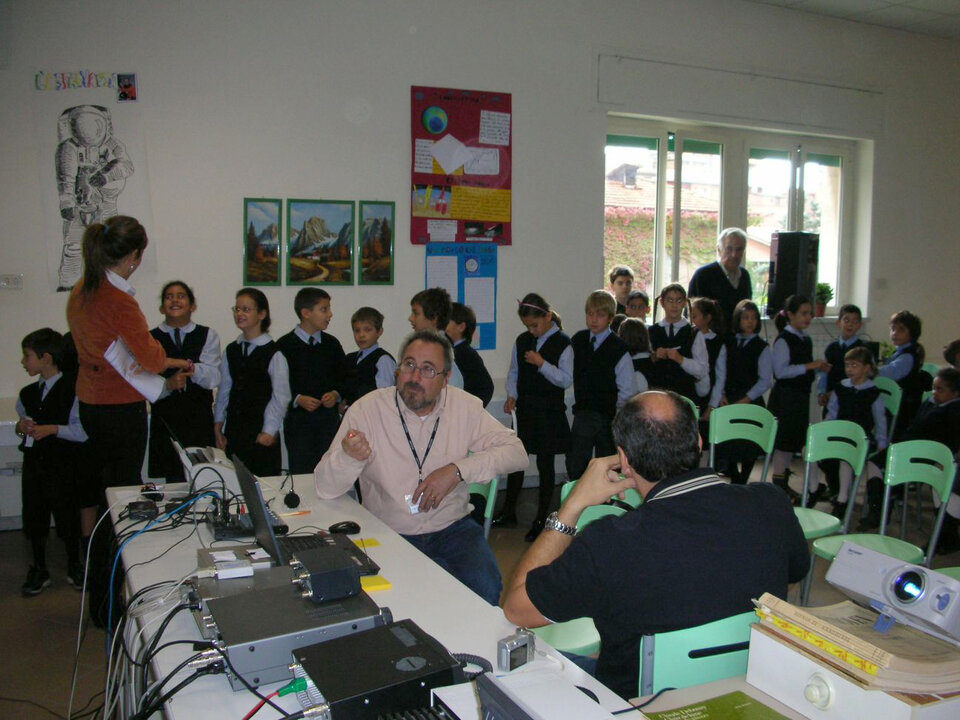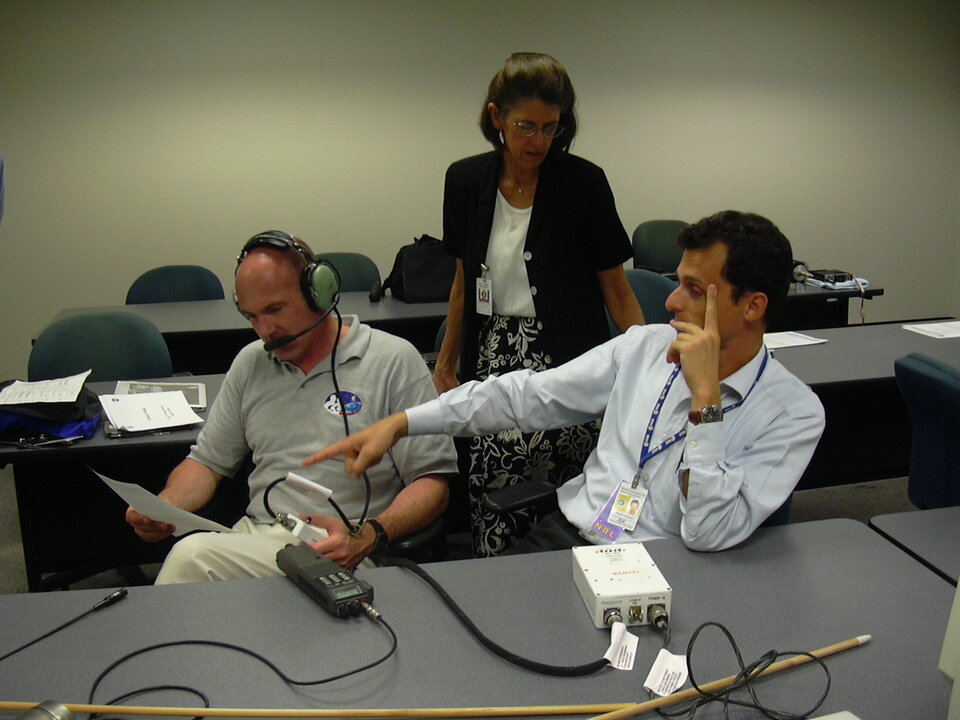Space Station’s radio amateurs rewarded
For astronauts aboard the ISS, a small multiband amateur radio station is a relaxing way to be in contact with people on Earth. It is also an effective tool for education. Now this Amateur Radio in the International Space Station project (ARISS) has been awarded the prestigious 2010 Boselli prize.
The 2010 Boselli prize of the Italian radio listeners' society AIR recognises how ARISS has shown the importance of radio communications to hundreds of young students in Europe and beyond. ARISS has spread the use of radio from the forefront of science in outer space to classrooms around the world. The prize will be delivered at the AIR AGM on 8 May in Faenza, Italy.
ARISS

Most of the astronauts and cosmonauts aboard the International Space Station (ISS) have an amateur radio license. They use the station’s ham radio to contact amateur radio stations on ground mostly in their free time, and the radio is used to contact pre-selected schools. During the ten minutes, that the ISS is typically above horizon and radio contact is possible, astronauts answer the questions prepared by the students.
When a school does not have an own radio station, volunteering amateur satellite operators set up a ground station for their use. When a proper station cannot be set up, some dedicated volunteering amateur radio stations can ‘telebridge’ the radio contact with the ISS by relaying the contact to the school by telephone.
This cooperation is part of the Amateur Radio in the International Space Station project (ARISS), an international working group, consisting of delegations from nine countries including several countries in Europe as well as Japan, Russia, Canada, and the USA. The organization is run by volunteers from the national amateur radio organizations and the international AMSAT (Radio Amateur Satellite Corporation) organizations from each country. The volunteers work closely with the national space agencies, including ESA.

In addition to this coordinated activity, the astronauts and cosmonauts make random contacts with hams around the world. Typically they make contacts during their breaks, pre-sleep time and before and after mealtime: so, if you own a ham radio station, you can also chat with the astronauts. More technical info is on the ARISS web pages.
The amateur radio station aboard the ISS is currently located in the Russian segment, the Zvesda Module, but in next summer it will be moved to European laboratory module Columbus. The antennas for the radio station are already in place outside the module, ready for action.
ESA will present ARISS activities at the European parliament in Brussels with a special exhibition 'European radio benefiting society: Emergency Communications, Education and Space' from 26 April.




